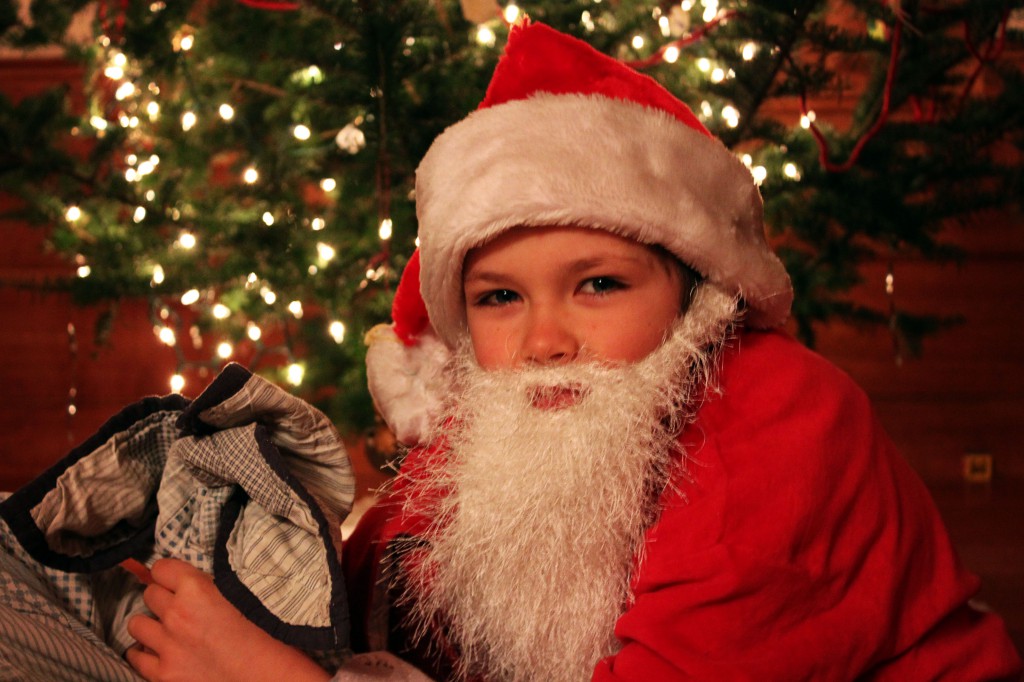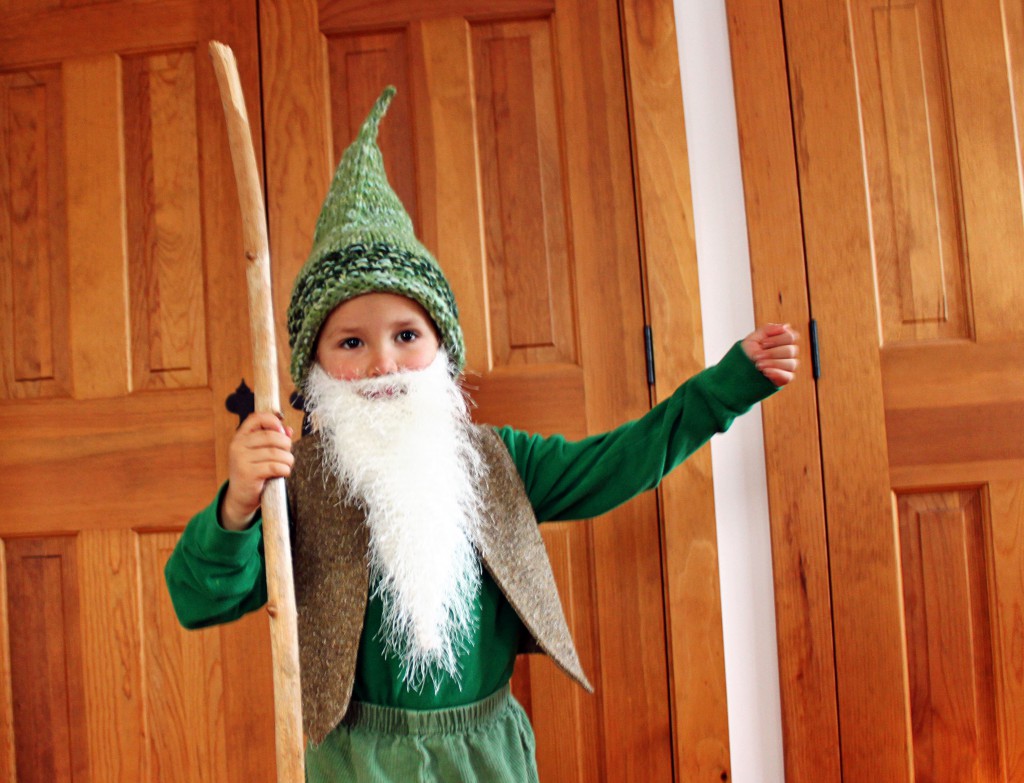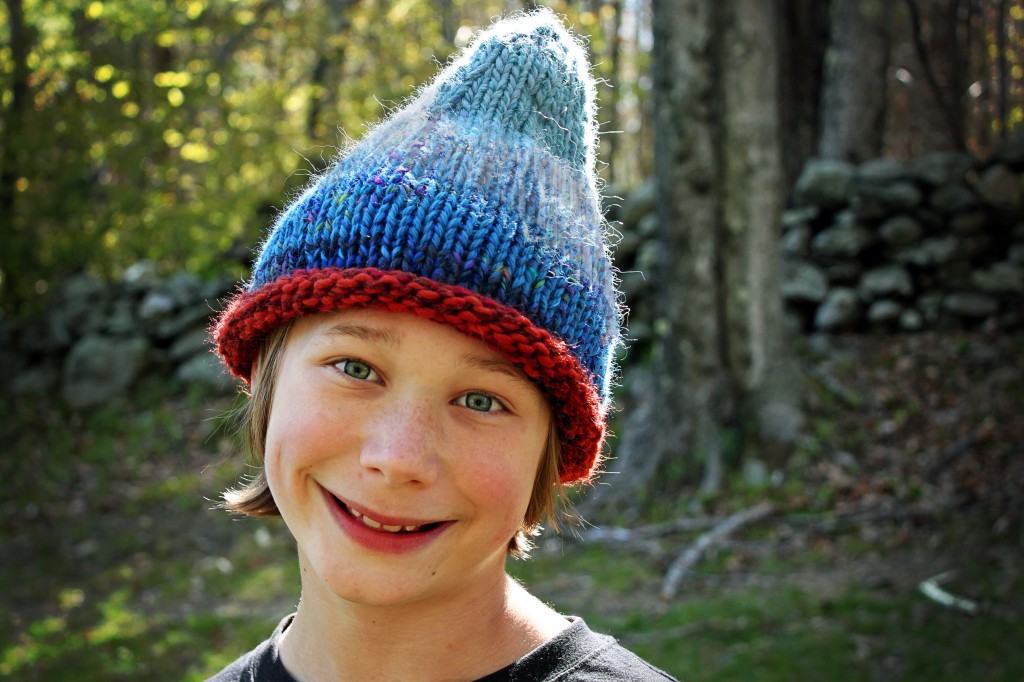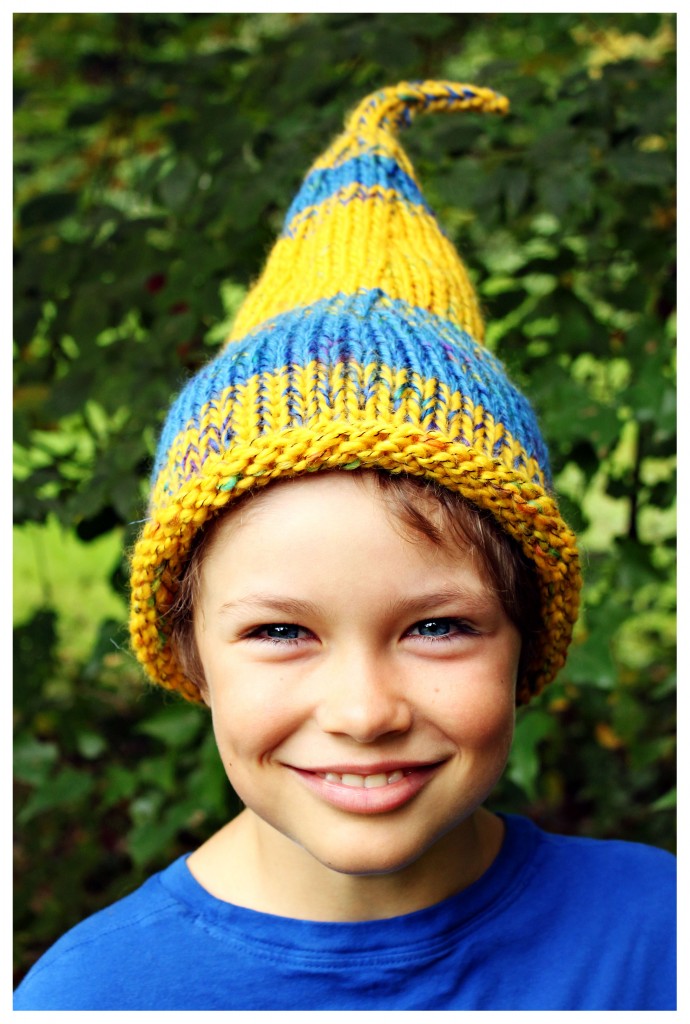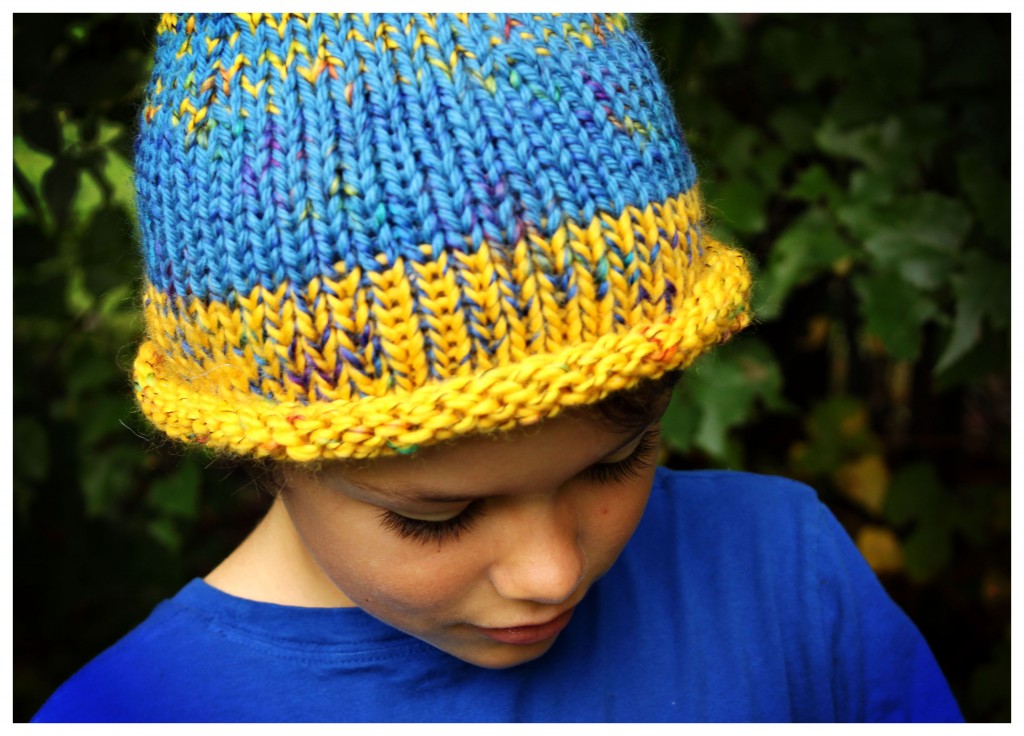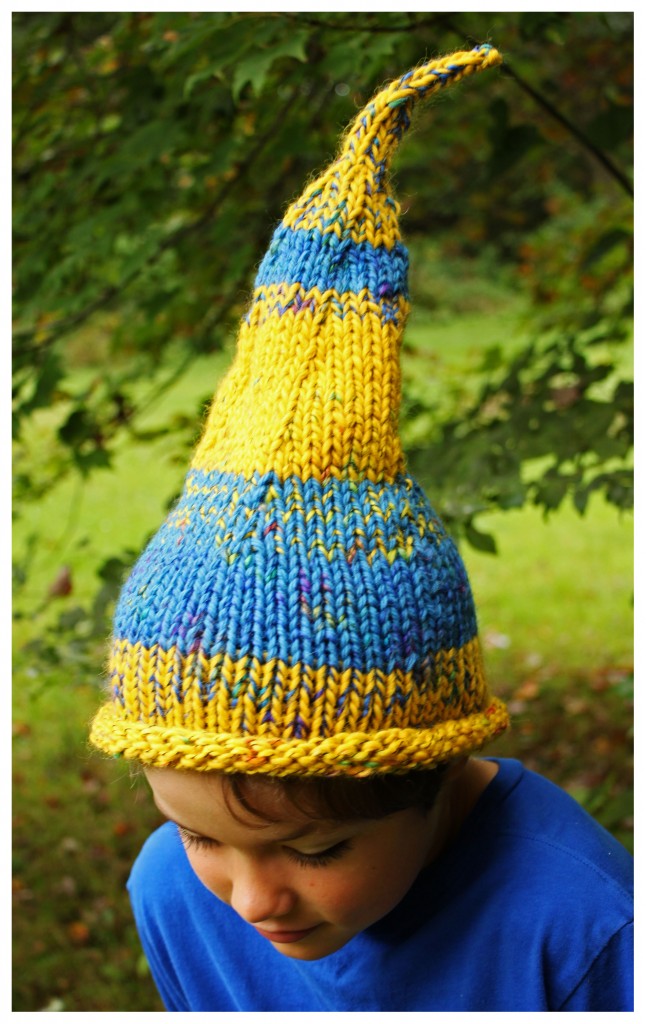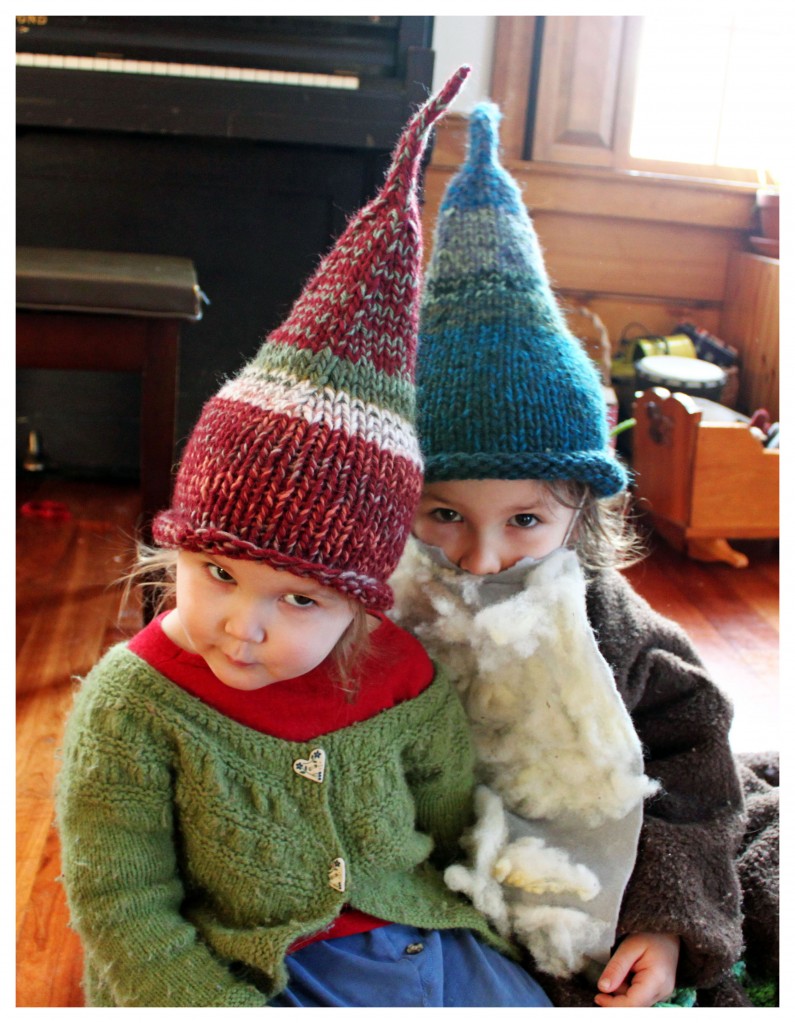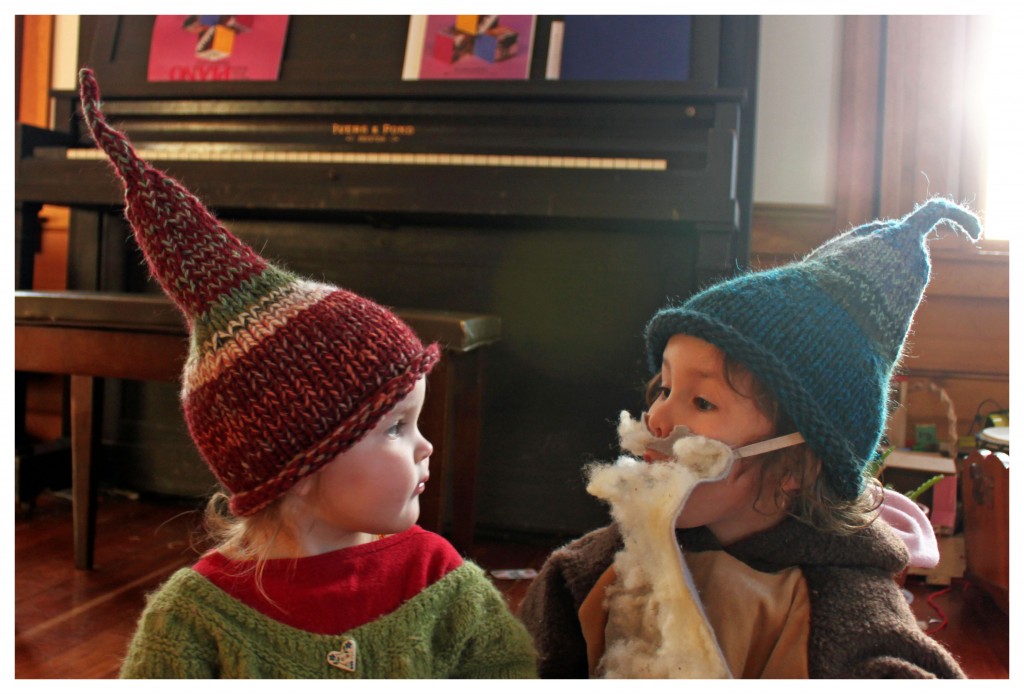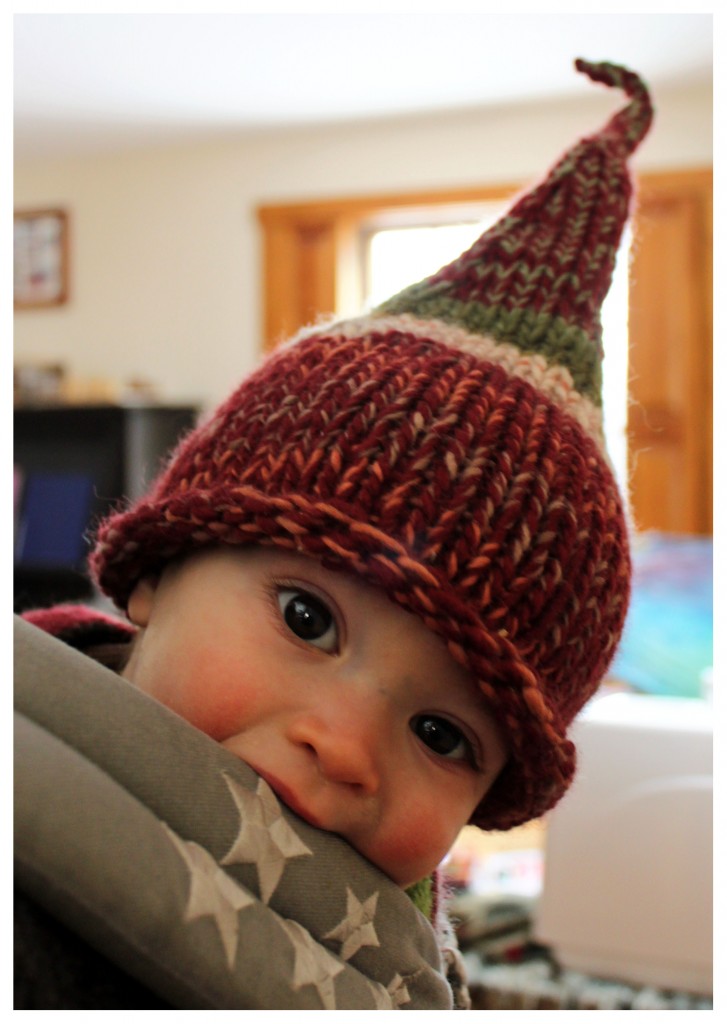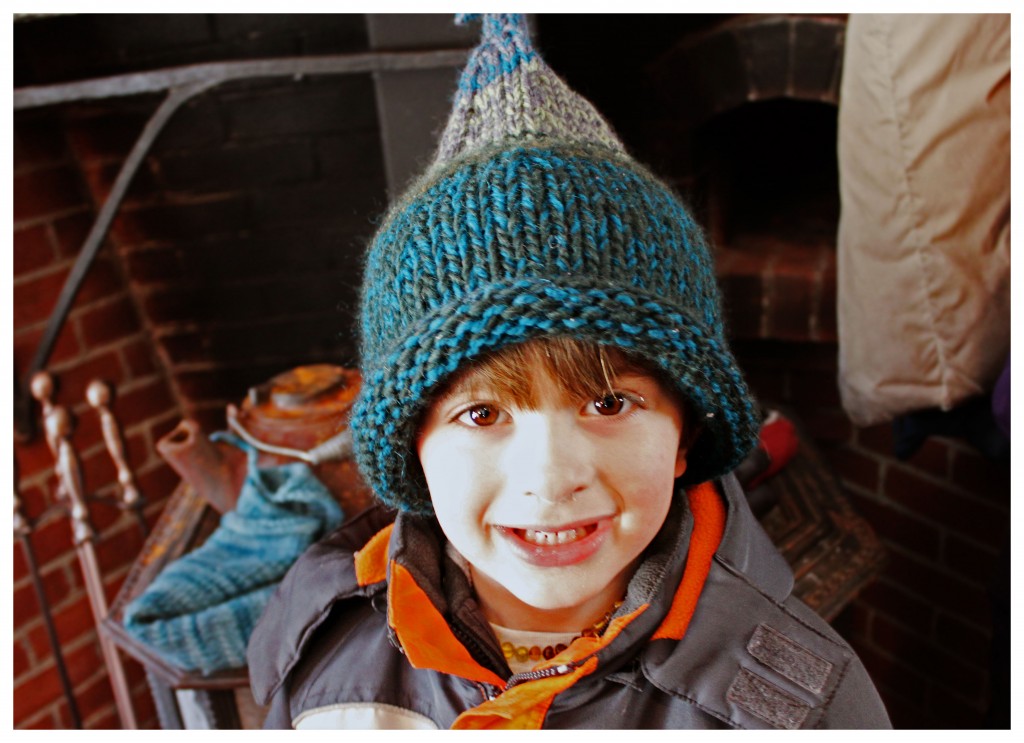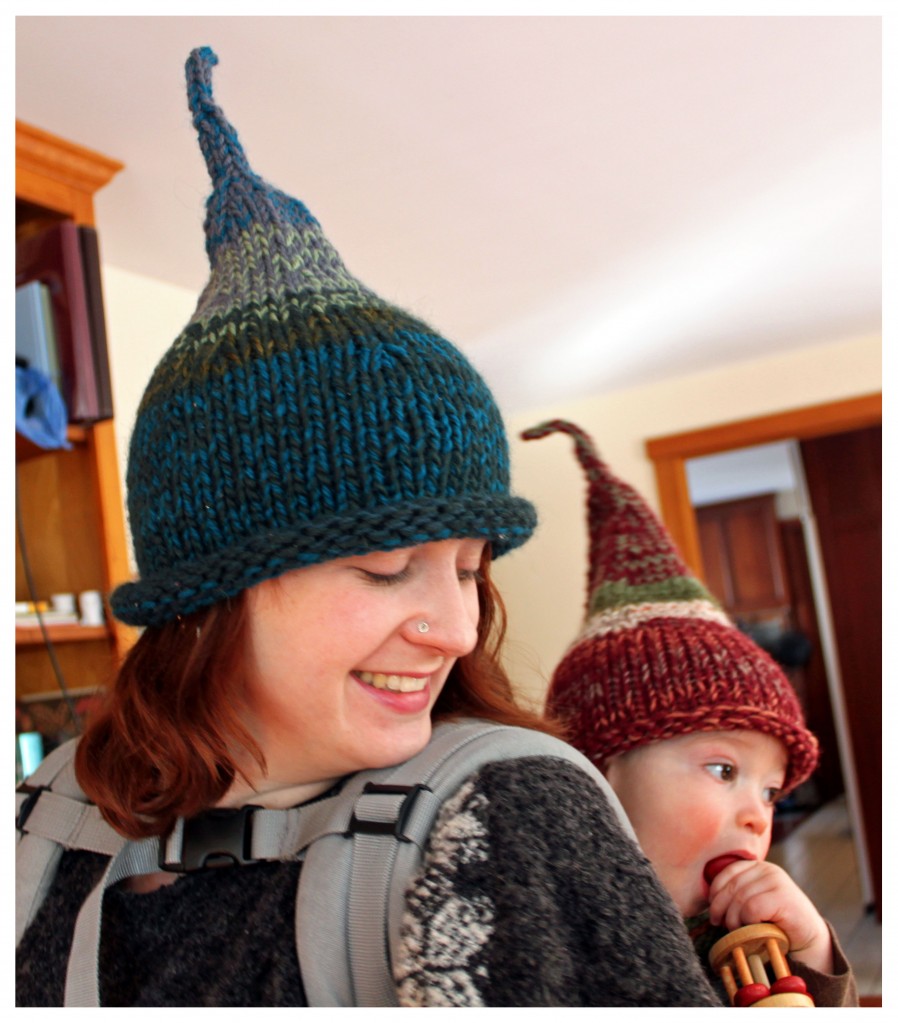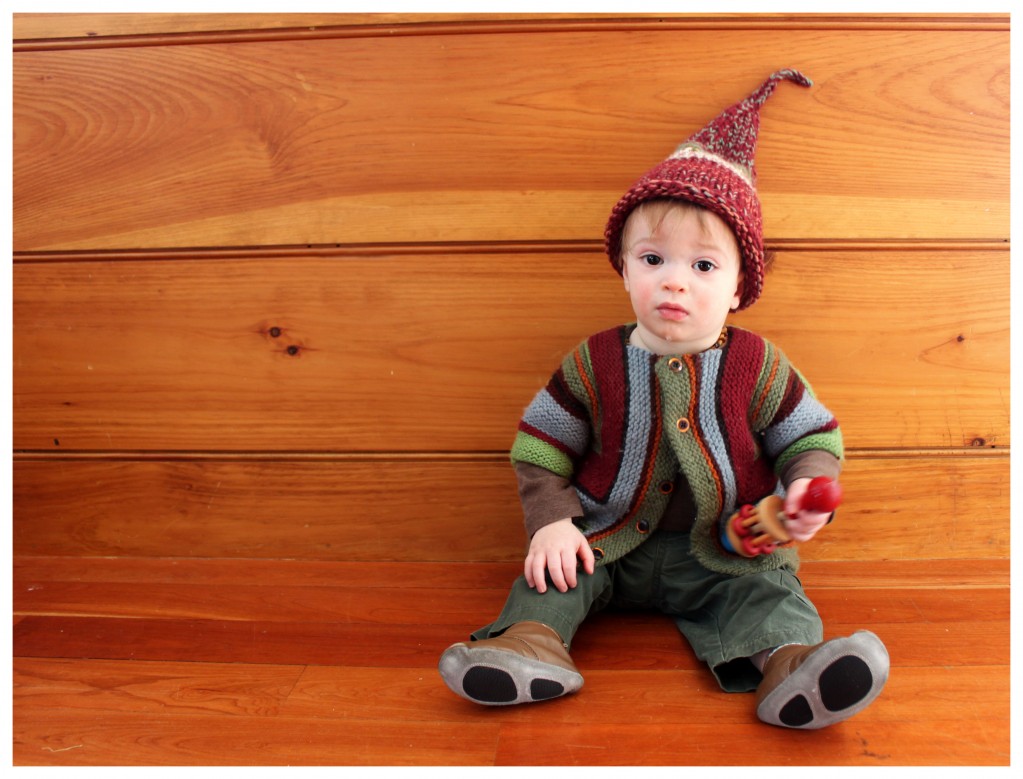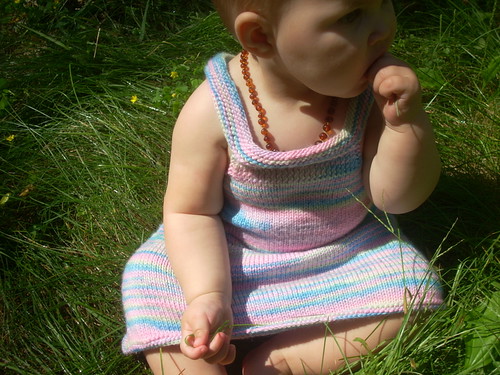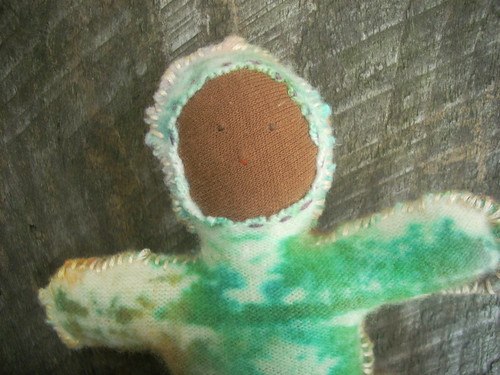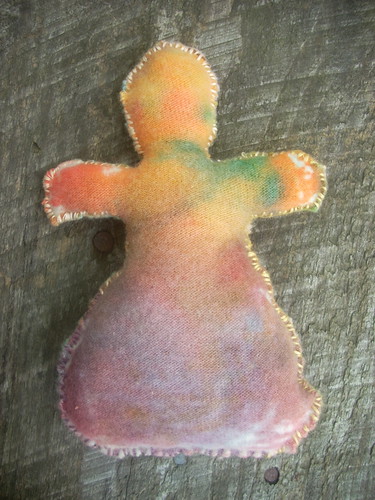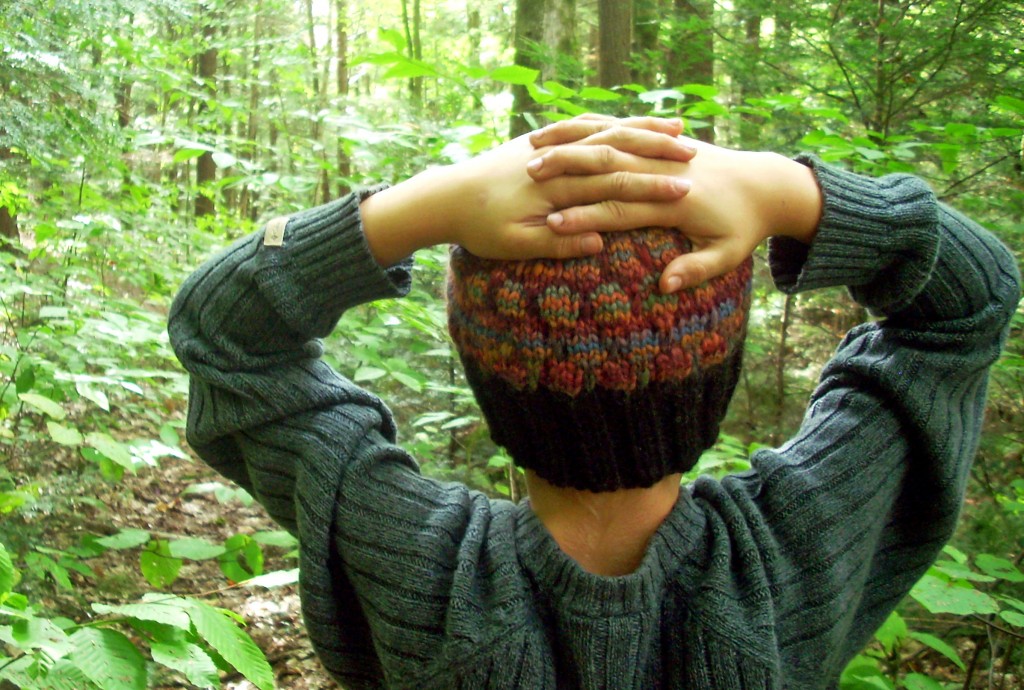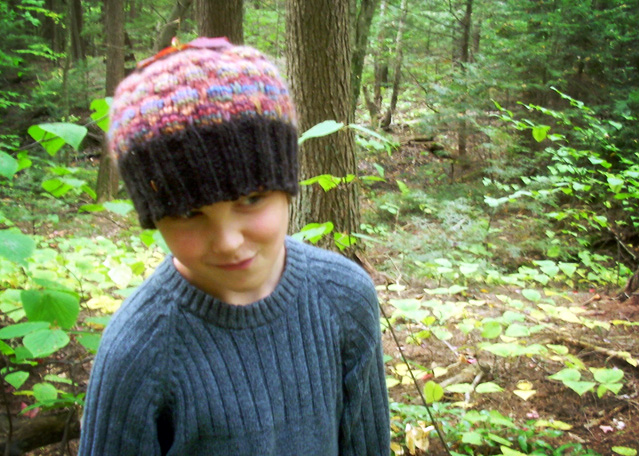I’ve had some requests in the last couple of days for that beard pattern I mention in this post. At this point it’s rather belated for Halloween crafting, but I thought that perhaps it might fit into some people’s Christmas plans.
And at least this way it’s out there for next year.
Disclaimer: This is a very loose, very rough tutorial, not a full scale knitting pattern, for a gnome/Santa/old man/wizard/what-have-you beard of all trades. Obviously it has not been test knit or anything of that sort.
For both of these projects we used Sensations Cello eyelash yarn in ‘white’. Snotty yarn snob that I am, normally I wouldn’t be caught dead knitting with novelty yarn and synthetic fibers at that, but it’s strange the things that crazy requests from cute kids will do to you. It’s considered a bulky yarn, I guess because of the eyelashes, but it doesn’t seem the least bit bulky to me. One ball is sufficient for this pattern (more may be needed for some of the variations).
You’ll also need a set of size 7 (4.5mm) needles, a length of 1″ elastic, matching thread and either a hand sewing needle or a sewing machine.
gauge is approximately 17 stitches and 22 rows per 4″ of unblocked garter stitch
Beard knitting notes, more or less as written in my notebook:
we start by making a little mustache…
row 1: co 5
row 2: k across
row 3: co 1, k to end, co 1
row 4: K1, bind off 5, k1
row 5: co 2, k1, co 8, k1, co2
**note: we’ve found this mouth shaping to fit and work for everyone in our family, that doesn’t mean it will be perfect for you, but consider it a one-size-fits-most. I really just can’t-stop-typing-like-that-today.**
increase section: work 6 rows, casting on 1 stitch at the beginning and 1 stitch at the end of each row
K5 rows (7 for a larger beard)
repeat increase section
k 10 (33) rows
decrease row: k1, ssk, k to last 3 stitches, k2tog, k1
K 5 rows
repeat decrease row
K 5 rows
repeat decrease row
K 3 rows
repeat decrease row
K 3 rows
repeat decrease row
K 2 rows
repeat decrease row
K 2 rows
repeat decrease row
K 1 row
repeat decrease row
K 3 rows
repeat decrease row
K 3 rows
repeat decrease row
K 2 rows
repeat decrease row
K 5 rows
k1, k2tog, k1
K 3 rows
k3tog
break yarn
Picking up stitches for chin strap:
You should now have this kind of funny shaped thing that looks like a trapezoid with a hole in it on top of a big inverted triangle. Starting at the very top corner of one of the sides of the trapezoid, pick up 5 stitches, working your way down towards the triangle part. I know this needs a visual aid. I’m sorry I don’t have one to offer at the moment! This should take you about half-way down the side of the trapezoid. If you would like a wider chin strap, feel free to pick up more stitches. Knit approximately 8 rows. This will depend on how far up the cheek and into the hair line you want the beard to go. Repeat what you did on the first side for the second side.
This is the exact way I knitted up the gnome beard, pictured on a 5 year old above.
Attaching the elastic band:
This design includes an elastic band that goes up and around the back of the head creating a very secure beard that conforms to the contours of the face in a more realistic way. Most people seem to like wearing it with the band just above their ears. This band can either be covered with a hat (as shown) or it could be camouflaged with additional yarn.
Sew one end of the elastic to the under side of one of the chin straps. Try on the beard, stretching the elastic across the back the head to get a good fit. Trim the extra elastic, sew the other side in place and you are done!
After working in the ends we opted to trim back some of the eyelashes around the mouth area, mostly because no one thought they tasted very good.
For a longer beard:
As shown on Santa above and Dumbledore below, simply increase the number of rows in between the shaping. Suggested row counts for the beginning sections are in parenthesis. Elijah and I were both working on that beard and I guess I stopped taking notes after that. Be sure to mix up the number of rows you use to give it a more natural look. A straight edged triangle with shaping at regular intervals will not look right.
For a beard with a rounded bottom edge:
Work as above until the first decrease row. At this point you can either work straight or as above until the beard is approximately the desired length (presuming that you are wanting a shorter beard then the one above, otherwise you will run out of stitches). Decrease at the beginning and end of each row for a couple of rows before binding off. This will round off the corners. How much rounding off you wish to do is entirely up to you. Continue with the pattern as written starting at the “chin strap” section.
…….
It does knit up quickly, so if Halloween has been delayed for you, due to the storm, you may just be able to get one made in time after all.
Enjoy!
